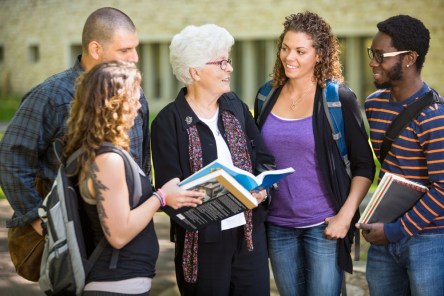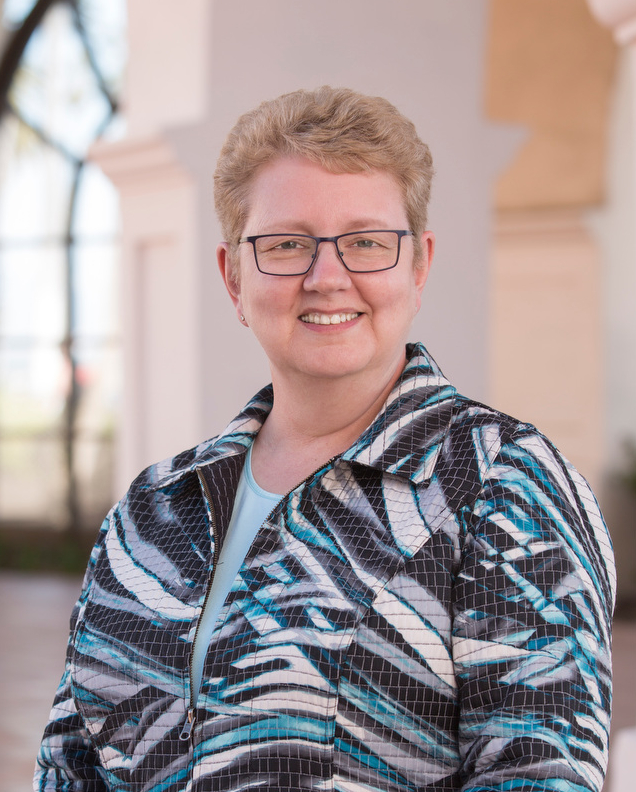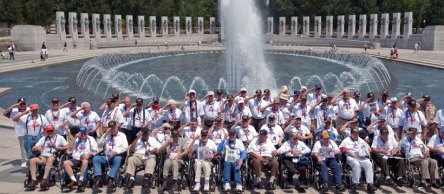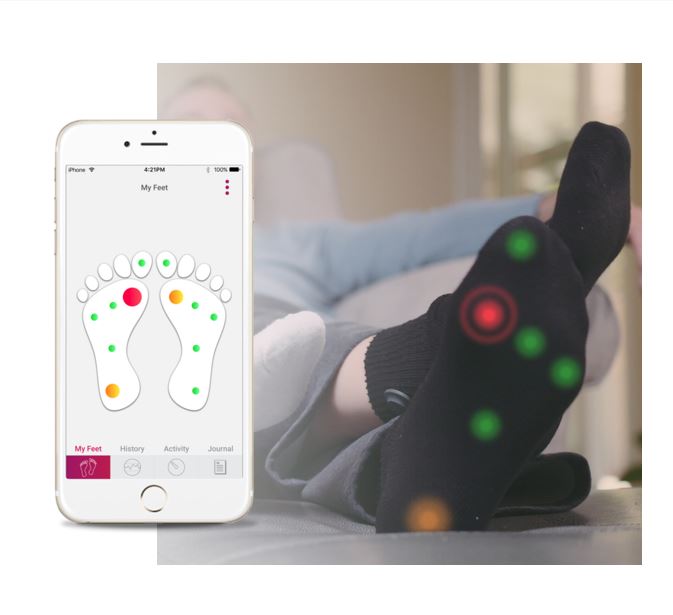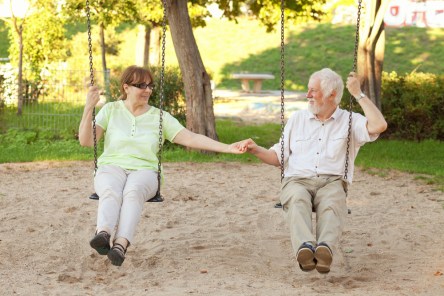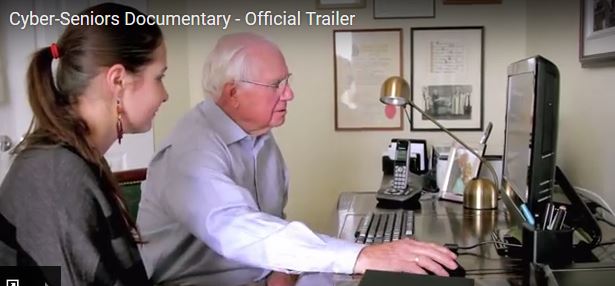Talent scouting and retention are a hot topic in the senior living industry. Organizations struggle to attract, identify, and retain talent. Without a solution, the industry is poorly equipped to provide quality care. Existing employees are overworked, and residents may wait underserved. The results can be fatal: a European study of 260,000 nurses reveals that increasing a nurse’s workload by one case could increase mortality risk by 7 percent within 30 days of admission. Tactics to improve recruitment and retention are crucial. A Growing Problem According to the American Association of Colleges of Nursing, 53 percent of senior care providers say that “insufficient numbers of quality applicants” is their primary problem. Once talent comes onboard, retention becomes a hurdle. The industry is challenged by a 50 percent turnover rate among direct-care staff. Without drastic changes, the industry will not be able to keep up with growth forecasts. Improved healthcare and living conditions has extended lifespans. There are more Americans living over the age of 65 now than at any other point in history. By 2030, the senior population will increase by 75 percent. The workforce needs to at least double to meet growing demand. Questions to Identify Practical Solutions Reexamining your current protocols for attracting and retaining talent may help you identify problems. The questions below can help you get started: What does your online reputation tell prospects about you? Pretend to be a prospect. Search for your organization online. Consider housing reviews, employer reviews, and social media commentary. What impression do you receive? About 84 percent of organizations use social media to recruit new hires. Are you among them? You may need to revamp your online presence. Begin by addressing the most pressing concerns to arise in the past 30 days. Then work to maintain your online reputation as new content arises. Can qualified talent quickly find your job posting and easily apply? Hone recruitment by focusing on healthcare job listing sites. This approach narrows the pool more quickly than a general online job board. Also consider a referral incentive for current employees. Nurses, for example, have completed specialized training. They may know other qualified graduates in search of work. Do you offer an appealing employee experience? The employee experience is what occurs when employees walk through the door of your community How employees feel about their workplace and management are major factors for retention. Consider: Are employees given clear guidelines for their mission? Do they have a clear career trajectory? Can they easily access a formal and efficient way to voice their concerns and suggestions? Do employees receive tools to help them manage stress, such as free wellness programs and classes? Does the current staff lounge encourage teammates to rest and recharge for the next segment of their shift? Teammates that are balanced, motivated, and supported can provide the best care—and build a respected brand. Does your retention plan realistically address the needs of employees? If you don’t know, ask. You may be surprised by what you find. For example, you may think a hip staff lounge would entice and retain young talent. What you may find is that “56 percent of Millennials said they would take a pay cut to work somewhere that is positively changing the world.” Learn what staff wants before overhauling your retention strategy. Do current teammates feel appreciated? When teammates feel undervalued, they’re likely to take their talents elsewhere. Defeat turnover by creating an employee recognition program. Monthly kudos, annual awards and perks show talent that you appreciate their efforts and value their loyalty. Data from the Bureau of Labor Statistics suggests that healthcare is one of the largest and fastest growing fields in the nation. The numbers are encouraging. As organizations refine their plans to attract, identify, and retain talent, we can turn the tide on the senior care...
Resident Stories
Focus on person-centered care
For many caregivers in senior living communities, residents’ identities are synonymous with their ailments. They begin to embody the treatments and assistance they require each day. While residents are much more than a name on a chart, the rich stories of their former lives often go untold. Moving into a new community can feel like letting go of one’s old self, and if a resident is struggling with dementia or cognitive disorders, the sense of loss is even greater. Recognizing the importance of deep personal understanding, many caregivers and communities have embarked on a mission to uncover residents’ stories. Truly knowing a resident and honoring their individuality has been proven to have medical benefits and improve their quality of care. In the senior living industry, it’s called person-centered care (PCC). The concept itself is not new—it’s been studied since the late 1980s—but, thanks in large part to the Affordable Healthcare Act of 2010 which emphasized the need for change from a traditional clinical care approach to a more personal one, the movement has gained momentum. Person-centered care has no official definition, but its supporters generally agree that what distinguishes PCC from the traditional model of care, which views the patient as a passive receiver of treatment, is a commitment to patients actively participating in their own medical plan. Other fundamentals of PCC include viewing treatment as an on-going process, one that nurtures and empowers the person being treated, enabling elders to experience purpose and meaning in their daily lives. At its core, person-centered care compels caregivers to see residents for the people they are—and not let the need for assistance with daily activities diminish one’s personhood. How can senior living operators and caretakers begin to make the shift from a traditional model of treatment...
Senior Survival
Hurricane Maria
In the aftermath of Hurricane’s Maria’s devastating impact on Puerto Rico, residents and staff at three senior living communities continue to face challenges, and find new sources of strength. A Yardi client in Puerto Rico shares their story. As Category 4 Maria hurtled towards Puerto Rico, three Insignia Senior Living communities initiated their disaster plan and began communicating with residents and family members. By the time the storm made landfall on September 20, its unprecedented strength meant even the best-laid plans called for some improvisation and cooperation on behalf of residents and staff. “No amount of preparation could have helped us anticipate all the challenges that we have been facing,” says Insignia Senior Living CEO Milton L. Cruz. “We have had to make a lot of adjustments to our plans, always using our best judgment.” A Continuing Crisis Though Hurricane Maria’s reign of terror ended weeks ago, the residents of Puerto Rico are still dealing with the aftermath of the storm’s impact. Over 80 percent of the island is still without power, and according to FEMA, residents are currently coping with low medicine supplies and a daily shortfall of 1.8 million meals. For Cruz and the residents who depend on him, the continuing crisis in Puerto Rico – especially the lack of dependable power – poses life-threatening risks. “While Hurricane Maria made landfall weeks ago, we are still facing the aftermath today as strongly as we did the day after the storm,” he says. “This isn’t over, and it will take months, if not years, to rebuild the island.” “This was a truly catastrophic event, and we will need a lot of help and support from our fellow US citizens.” Staff Saves the Day Though the precautions and protocols established by Insignia’s Puerto Rico...
Aging in Place
Easy Design Hacks
According to the 2012 AARP Public Policy Institute study, more than 90 percent of seniors plan to age in place for the next five to 10 years. Today’s seniors value features that allow them to maintain independence within their home without relying on care providers or family. Fulfilling that dream may be harder than they think. Rodney Harrell, housing expert with AARP, estimates that only 1 percent of every 100 million US homes is conducive to aging in place. The typical home will need upgrades to accommodate aging residents. To appeal to aging residents—present and future—designers may consider several universal design elements that make housing more accessible without a structural renovation. Ease of Access The current cabinetry and doors in a home can receive an age in place update with a few simple additions. Consider drawer pulls and lever door handles in place of knobs, which can become challenging to grip. Sliding trays make deep cabinets easier to access. Soft closures minimize noise and prolong the life of shelving. New appliance lifts bring hard-to-reach items to accessible levels. Hardware Resources’ The Soft-close Mixer/Appliance Lift makes it easy to bring heavy or cumbersome items to counter level when needed. Users can then stow items out of sight when they are not in use by pulling upon the lever. The Soft-close Mixer/Appliance Lift handles loads up to 45 pounds. Elevated microwaves save counter space but they may be difficult to reach. Installing the microwave at counter height or waist height offers greater accessibility as users’ range of motion and mobility change over time. By installing showers with hand-held showerheads, built-in seats and grab bars, residents can enjoy improved functionality for multiple stages of life. Accessibility National Association of Home Builder (NAHB) recommends recommends that washing machines...
Weathering the Storm
Avoiding Irma
A Tallahassee senior living provider opens its doors to senior community escaping the path of Hurricane Irma. On September 1st, Mike Schmidt quickly responded to a call asking for help relocating 100 seniors from the Naples, Fla. community they call home. As Hurricane Irma began to bear down on the Florida Keys, Schmidt, Executive Director of Tapestry Living, knew he must act quickly to make room for the displaced residents while also helping them feel safe in secure during this turbulent time. “We’re ready to go,” Schmidt told local news station WTXL. “We’ve got food supplies on order. Medications are ready to go. The pharmacy has been contacted, so things are really working out for the best.” A Storm for the Ages With most of Houston still under water, the nation once again braced for another historic storm. Generating more than 50 inches of rain and causing over $75 billion in damage, Hurricane Harvey currently holds the spot as the “second-costliest natural disaster in US history,” but that ranking could change now that Hurricane Irma rips through the Caribbean on its way to Florida’s east coast. After decimating several islands in the Caribbean, the storm should reach the Florida keys late Friday, making landfall near Miami early Sunday morning. A more weakened storm will arrive in Orlando on Monday before Irma finally downgrades to a tropical storm and heads out across the Atlantic Downgraded to a Category 4 storm early Friday morning, Hurricane Irma currently churns about 400 miles southeast of Miami. Moving at about 14 mph and generating winds of up to 150 mph, the National Weather Service issued a hurricane warning for Florida overnight, warning residents that “preparations to protect life should be rushed to completion.” With over six million people in the Hurricane’s path,...
Cultural Concerns
Aging Demographics
Expected to command a significant portion of America’s aging population over the next several decades, the nation’s aging Hispanic population will usher in a new era of cultural needs and expectations. That’s according to a new study commissioned by the Associated Press-NORC Center for Public Affairs Research. After surveying older Hispanics on their attitudes and expectations regarding assisted living and senior housing, researchers concluded Hispanics might “face additional obstacles in getting culturally competent care.” “…49 percent of older Hispanics have already faced language or cultural barriers as they navigate the health care system,” state the report’s authors. “These barriers have resulted in additional stress, delays in getting care, increased time and effort, not getting needed care and higher than expected costs for care.” Respect and Value Expressing feelings of frustration, loneliness and confusion, the survey’s participants expressed concern over the ability of their local health care providers to meet their specific needs. Specifically, respondents reported difficulty communicating with doctors and nurses due to language and cultural barriers. For those experiencing difficulty overcoming these challenges, two-thirds said they experienced additional stress and delays related to receiving adequate medical care. Unfortunately, less than half of the Hispanics surveyed expressed confidence in their local health care facilities and nursing homes’ ability to meet the needs of senior residents. Even fewer respondents felt home health aides and assisted living communities are up to the challenge, with only 20 percent of participants conveying they felt assured of the capabilities of their local home senior health providers. Complex Communications With almost 3 out of 4 Hispanics speaking Spanish in the home, the language barrier remains the foremost barrier to adequate senior care. According to the survey, a little more than a third of respondents reported speaking English “less than ‘very...
College Cohabitation
On Campus Senior Housing
As healthcare technology continues to evolve, universities across the country are bringing senior housing on campus in order to create new models for healthy aging. Hosting seniors on site allows students and faculty to collect healthcare data on residents and use that information to develop proactive solutions to senior care. Highly popular, these university-affiliated retirement communities are a win-win for residents and academia. “There are opportunities in terms of an intergenerational setting as well as the financial health for the retirement community and the college,” Paula Panchuck, vice president and dean of Lasell Village, told Senior Housing News. “There are some beautiful synergies that bond us even more closely.” Symbiotic Studies Across the country, these programs combine continuing education with healthcare and gerontology coursework resulting in the ability to promote research and forge community connections. In many cases, residents are encouraged to participate in classes and other campus activities, while students gain invaluable access to the day-to-day routines of the aging population. Situated within the campus of Lasell College in Newton, Mass, Lasell Village mimics small town living with buildings, including a clock-towered Town Hall, stretching out over 13-acres. By bringing senior housing on campus, Lasell Village promotes retirement living comprised not just of continued care for aging adults, but of a “community with the cultural, social and recreational opportunities of lifelong learning.” Other senior-college partnerships not only welcome residents to explore university offerings, they also seize the opportunity to develop a curriculum focused on aging and senior care. Recognized as one of the Best Nursing Homes in 2016, Holy Cross Village at Notre Dame hosts a gerontology consortium and a four-year school with classes available to students and residents. “It’s a great symbiotic relationship because the students can work with our residents and...
Kindness Rules
Senior Giving
To mark two decades in the senior care industry, Benchmark Senior Living recently embarked on a seven state mission to spread kindness and neighborly love in towns and neighborhoods where the company’s 54 senior living communities are located. For the month of June, residents living near a Benchmark community discovered care packages on their doorstep along with small helpful acts like a newspaper moved closer to their front porch, all with a note commemorating Benchmark’s “Radiant Acts of Kindness.” Employees committed to 1,000 such acts throughout the month. “This is Benchmark’s 20th anniversary year, and we want to give back to the communities and families that have supported our company’s growth since 1997,” Tom Grape, the company’s founder, and CEO said in a statement. “So, every one of our 54 senior living communities across seven Northeast states — and our home office in Waltham, Mass., — has committed to performing at least 20 Radiant Acts of Kindness during June in their local neighborhoods and towns.” Located in Waltham, Mass., Benchmark Senior Living operates 54 senior living communities throughout the Northeast. They offer services ranging from independent living to skilled nursing and memory care. For the last nine years, Benchmark has been recognized by The Boston Globe as one of the “Top 100 Places to Work,” and many of Benchmark’s executive directors and staff embraced the June initiative. Every one of Benchmark’s communities committed to the 1000 Acts, with many taking a creative approach that went beyond gift baskets to include washing cars, providing free tennis balls to neighborhood dogs to handing out random gift certificates. “We can’t wait to share these compassionate acts with West Chester and surrounding areas,” commented Doug Buttner, executive director, Wellington at Hershey’s Mill. “Our employees already have surprises prepared...
Going Digital
Electronic Health Records
By adopting an electronic health record platform with a centralized database, senior living provider Northbridge Companies lives up to its commitment of providing best quality of care to its residents. When Northbridge companies made the choice to transition from paper documentation to electronic health records, the company’s primary objective involved eliminating redundant tasks and improving staff productivity. As someone on the front lines during the company’s switch to Yardi EHR, Marcia Suddy saw firsthand how swiftly technology can improve the workplace. “One of the biggest changes with electronic records versus paper is that you can lay your hands on information very quickly,” she says. “That reduces the length of time needed to resolve issues and helps us provide the best quality of care to our residents.” Live Well, Love Life Founded in 2006, privately owned senior living provider with 15 communities servicing residents across New England, Northbridge Companies has made providing quality senior care a priority for over a decade. Northbridge Community provides its 850 residents with an environment designed to “encourage freedom, offer lifestyle choices, and provide the necessary services to live life to the fullest.” When Suddy began her nursing studies, she quickly realized she felt a connection to seniors. “While I was earning my administrator’s license and BC certification, I absolutely fell in love with senior care,” she says. “I don’t foresee ever doing anything else.” As Regional Director of Care Services for Northbridge, Suddy feels great satisfaction working for a company she describes as being “passionate about senior care.” “It’s such a relief to work for an organization that truly lives up to the values they advocate,” she says. “It’s not just the president of the company, but the associates, the investors, the families. Everyone is committed to providing the...
Virtual Veterans
Senior Tech
With the help of virtual reality, aging veterans unable to travel can get up close and personal with far-flung war memorials. As the clock strikes 11:11am on Veterans Day, the sun aligns perfectly with the Anthem Veterans Memorial in Anthem Arizona. At the appointed hour, beams of light are funneled through the monument, casting a solar spotlight over The Great Seal of the United States. Surrounded by bricks inscribed with the names of over 750 servicemen, for that one moment the seal glows on the ground, gleaming up from the shadows cast by the shrine’s five marble pillars. While thousands of visitors make the trek each year to watch the transformation live, for many aging veterans the trip is not an option. Failing health and lack of finances make travel prohibitive for many seniors. Thankfully, advances in virtual reality can now help housebound adults explore the world from the comfort of their armchair. “They can be feet away from them again, in full glory, and feel like they’re there with them,” says Sarah Hill, the co-founder of Honor Everywhere, a nonprofit organization to helping veterans see the memorials erected in their honor – either in person or via virtual reality. Losing History The average age of US soldiers during the Vietnam War was 22, and so many of that war’s former combatants are currently nearing retirement age. In addition, in the last 14 years, Vietnam veterans are dying at a rate of 390 per year. For World War II era veterans the numbers are even more staggering: 500 deaths a day and with the US Department of Veterans Affairs estimating that only 620,000 of the 16 million servicemen and women were still alive in 2016. With an average age of 92, most of the...
Smart Socks
Wearable Tech
The wearables trend shows no signs of abating, and for older adults suffering from chronic diseases like diabetes, a simple “smart sock” could be a lifesaver. For sufferers of both type 1 and type 2 diabetes, foot issues abound, from swelling to numbness and tingling in the toes. Unfortunately, because of the nerve damage triggered by the disease, some foot injuries go unchecked, leading to painful and dangerous complications, including infection and amputation. For older adults, these types of issues are all too common, which is why Siren Care’s Siren Smart Sock could be a game changer. “Diabetic foot ulcers are serious problem,” says Podiatric Surgeon Alexander M. Reyzelman, Co-Director for the UCSF Center for Limb Preservation, in a video about the Siren Sock. “1.5 million patients will develop foot ulcers in the United States, and 20% will develop amputations,” he warns, “and 50-70% will go on to lose their life within five years.” A Different Kind of Wearable While fitness trackers and smart watches grab the spotlight, a quiet revolution is afoot. The number of wearables designed for medical use is growing every day, especially in the senior care market. For the 11.8 million senior citizens suffering from diabetes, using test strips and blood pricks can be complicated. Because self-monitoring can be difficult for older adults, specially designed wearables can help with compliance and improve overall health by flagging small issues before they become a big crisis. Be it socks or wristbands, the simplicity of the system is one of the main advantages. “…it is simply not possible to design a device that meets the expectations of a millennial while being operable by an octogenarian,” explains Thor Schrock, developer of the Allen Band, a wristband that helps detects falls. “The most important thing to...
Senior Living Trends
Great Expectations for 2017
As the year begins and a new administration takes office, senior housing providers are gearing up for change. While a certain amount of anxiety is to be expected, according to George Yedinak from Senior Housing News, many of the developments that will take place over the next twelve months merely build upon preexisting circumstances. “While operators, owners, and others will be reacting to possibly dramatic changes,” he writes, “some senior living issues that have been top of mind for years show no signs of abating.” Occupancy and Oversupply According to the National Investment Center for Seniors Housing and Care, nursing home occupancy remained flat through the end of 2016 even as the number of units in development continued to rise. That trend will likely continue across all types of senior care well into 2017. With the pool of potential residents unable to match supply, even well-established providers may find themselves “protecting their turf.” “New supply could affect everything from rents to marketing budgets and wages,” writes Yedinak. “Developers looking to build, or buyers on the hunt for good opportunities, will feel even more pressure to judge the supply-demand forces in a given market.” Although consumer purchasing power has steadily increased over the last year, increasing pressure from new supply will undermine rent escalation. As a result, says Yedinak, any rent increases in competitive markets will likely hover around two to three percent rather than the standard three to four percent. “Getting rents right will be even more of a balancing act than usual in 2017,” he warns, adding that operators should be aware of the “steady drumbeat within the industry to cease discounting altogether and increase pricing transparency, to meet consumer expectations.” Staffing Shortfalls For the last few years, workforce woes have plagued senior...
Young at Heart
Senior Playgrounds
Forget sitting on a bench feeding pigeons; these days older adults are ditching the breadcrumbs for senior-friendly playgrounds. We all know bodies at rest tend to stay at rest, and for older adults, physical activity can be particularly challenging. Fitness experts often counsel that the exercise is whatever is comfortable and convenient. And what could be easier than a spending some time on the playground? That’s certainly the notion behind senior citizen playgrounds. By putting the “fun” back in fitness, these next-generation playgrounds are designed to appeal to all ages. “These playgrounds allow us to promote healthy living in cities across the country,” Humana President and CEO Bruce Broussard recently explained. “It’s important to us to make it easy for people to achieve their best health – kids and adults alike.” Play Time They’re calling it the “playability” movement: communities working to create safe spaces for families to have fun and stay active. In support of the cause, KaBOOM! has created the Playful City USA initiative with help from the Humana foundation. “We are proud to partner with Humana to help give all children the childhood they deserve. We are confident that, together, we can help families make healthy, playful choices that build a new generation of ‘Healthy People,’” said Darell Hammond, CEO and Founder of KaBOOM! “Play matters – not just as an activity for children, but as a foundation for lifelong well-being and strong communities.” Let’s Get Physical In Europe and Asia, playgrounds for senior citizens provide low-impact exercise equipment to help older adults safely raise their heart rate. These parks often include elliptical machines, static bikes and other body flexor equipment for enhanced balance and flexibility. “We wanted to break the myth of the old person coming to the park and...
Sharing Not Caring
Social Media Abuse
After a rash of inappropriate and unsettling photos and videos posted by nurses and staff, the senior living industry is stepping in to protect the privacy of residents. At its best, social media strengthens human connection and makes the world feel a little bit friendlier. Unfortunately, when used maliciously or thoughtlessly, social media can become a weapon wielded against the weak and voiceless. After a disturbing series of abusive and demeaning social media posts by care providers at assisted living facilities throughout the U.S., the industry is stepping in to set up guidelines and enforce HIPPA regulations. In a statement to ProPublica, Sen. Charles Grassley, R-Iowa, and chairman of the Senate Judiciary Committee said, “Nursing homes are obligated under the law to keep their residents free from abuse. Exploitation on social media is a form of abuse, and the agency memo makes that clear. We need to prevent it, and we need to punish it when it happens.” Right to Privacy With cameras and video recordings readily available, more and more residents have become the subject of ridicule and exploitation. While some of the victims are aware of what’s going on, just as many are caught in the throes of real pain and suffering – sometimes even death. Because of the egregious behavior by some nurses and staff members at assisted living facilities, the Centers for Medicare and Medicaid Services (CMS) recently outlined a set of standards aimed at protecting residents from the most severe of social media cruelties. In a memo about the issue, CMS unequivocally establishes that “each resident has a right to be free from all times of abuse, including mental abuse.” “Mental abuse includes, but is not limited to, abuse that is facilitated or caused by nursing home staff taking...
Small Town Seniors
Limited Care Options
With over 20% of older Americans living outside major cities, rural senior living providers face unique challenges and untapped opportunity In small towns across the country, senior citizens face a trio of challenges as they transition into retirement: lower than average incomes, few housing options, and a shortage of services. As aging baby boomers put even greater strain on senior living services, rural communities throughout the United States will have to act quickly to meet demand. Small, Expensive and Rare According to a 2014 survey by the Housing Assistance Council (HAC) entitled Housing and Aging Rural America: Rural Seniors and Their Homes, nearly one-quarter of US seniors live in rural communities. Unfortunately, for older adults residing outside of the nations’ urban centers, senior housing options are slim to nonexistent. Additionally, the standard of care available doesn’t always compare to what’s offered in suburban and urban areas. Even in situations where facilities exist, most are too expensive because incomes are usually much lower outside larger municipalities. “Much of the affordable-housing stock in rural housing areas is old and in need of repair, says Sheila Crowley, president of the National Low-Income Housing Coalition. “Many of the people who live there don’t have the resources that they need in order to keep the houses in good repair,” “A rapidly aging population will significantly impact nearly all aspects of the nation’s social, economic, and housing systems,” note the authors of HAC’s report. “With the scope and magnitude of the looming demographic shift of seniors, rural communities will need to develop a range of housing options available to seniors such as more rental housing, rehabilitation and repair programs, housing with services, and assisted living.” Filling the Void Where HAC highlights the challenges of rural development, Jane Adler sees opportunity....
Electronic Only
New NY Prescription Law
With the click of a mouse, doctors in New York State will soon be able to abandon their sometimes illegible medication notes for electronic prescriptions. As of March 27, New York is the first state in the nation to require all physicians to use electronic prescriptions, a law backed up by fines and criminal penalties. The basis of the new mandate lies in a 2012 state law, I-Stop, designed to decrease prescription opioid abuse. I-Stop created an online registry listing all medications prescribed to an individual patient. In an effort to reduce substance abuse, doctors were required to check the list before prescribing any new medications. Far from infallible, I-Stop’s registry remained vulnerable to human error – intentional or unintentional – as even a minor misspelling could thwart medication tracking. The hope is that by shifting to an entirely electronic prescription system, medications can be carefully tracked and fraud mitigated, if not eliminated altogether. The prescriptions will be managed via the Surescripts network. Surescripts, which processes over 1 billion e-prescriptions per year, connects doctor’s offices, hospitals, pharmacists and health plans through an integrated platform. While the shift to electronic prescripts robs consumers of some agency –patients will have limited ability to change pharmacies – a 2015 survey by Surescripts revealed a majority of patients felt more secure with physicians who were “digitally connected.” In fact, more than 50% of survey respondents admitted online access to test results, medical records, and appointment scheduling would all be compelling enough to choose one doctor over another. Despite the law, many of New York’s health care providers have yet to make the switch to electronic prescriptions. As of January, a little over half of the state’s prescribers were able prescribe and send prescriptions electronically. Some of the state’s...
Bridging the Digital Divide
Sienna Senior Living
We live in an increasingly connected society, with unlimited data at our fingertips and the ability to communicate quickly with friends and family living next door or half-way ‘round the world. There’s an ease and level of expectation we take for granted when it comes to bending the latest technology to our will, but for many senior citizens, modern digital tools and gadgets often seem complicated and out of reach. It’s a generational gap the Cyber-Seniors program hopes to bridge through its innovative approach to senior education. For Sienna Senior Living, participating in the program is a natural extension of the company’s commitment to providing its clients with comfort, independence and “the warmth of human connection” through its forward thinking, resident-centered approach to senior care. The brainchild of two teenage sisters inspired by the impact of the Internet on the lives of their own grandparents, Cyber Seniors began in earnest in 2009. Through the program, high school students help seniors develop a technology skill set that allows them to use computers, the internet and other digital tools to connect with friends, family and their community. Over the years, the program has collaborated with the University of Toronto Occupational and Therapy Masters Program and Sienna Senior Living to develop a best practice resource manual to ease implementation of similar programs throughout Canada across all Sienna Senior Living Retirement Residences and Long Term Care Homes. Last year’s pilot projects involved residents at the Cedarvale and Villa Leonardo retirement communities. As Sonia Roul, Recreation and Leisure Consultant for Sienna Senior Living’s Long Term Care Division, explains, the Cyber-Seniors “empowers the residents to go beyond their walls and explore what the world of technology can offer them.” “Our hope was to help our residents connect with their loved ones in a new way,” says Roul, “while also providing them with the opportunity to connect on a human level with a much younger generation.” Refreshed Spirits and Enhanced Health For those involved in the project, the Cyber Seniors program is more than just a computer class; it’s a source of life enrichment for all the participants. By pairing interested retirees with volunteer high school students, the Cyber Seniors program creates a cooperative, mutually rewarding learning environment. The hope is that the program will prompt meaningful, multi-generational conversations and inspire new interests amongst residences in the senior living communities. For Sienna Living, the appeal of the Cyber Seniors program primarily involves the chance to create bonds and build connections between residents and the community. As a source of entertainment and physical and psychological enhancement, the program aims high and hits the mark. As seniors become more comfortable accessing the World Wide Web and using YouTube, Skype and more, they broaden their horizons and connect with the outside world while also building long-lasting friendships. “Breaking down the barriers of communication through learning and development truly does wonder for the residents and students involved,” declares Roul. “The bonds created between the students and the residents were unexpectedly powerful,” Roul explains. “They were able to create connections with past lifestyles, and there was a mutual exploration across natural areas of interest.” The seniors are full of admiration for their teen advisers, dazzled by their ability to navigate the online universe, and heartened by the supportive and encouraging learning environment created by their young instructors. “To see them be so young but know so much is amazing,” explains a Cedarvale resident in a video about the program. For the teens, the benefits of assuming the mantle of Cyber Senior instructor allows them the opportunity to experience leadership roles while also forging intergenerational relationships. “It feels awesome,” declares a teen participant in the video. “It feels like you’re bridging the gap between the past and now.” Broadened Horizons and Deepened Connections In June of 2014, the Sienna Senior Living’s Cedarvale Lodge Retirement and Care Community in Keswick Ontario collaborated with...







